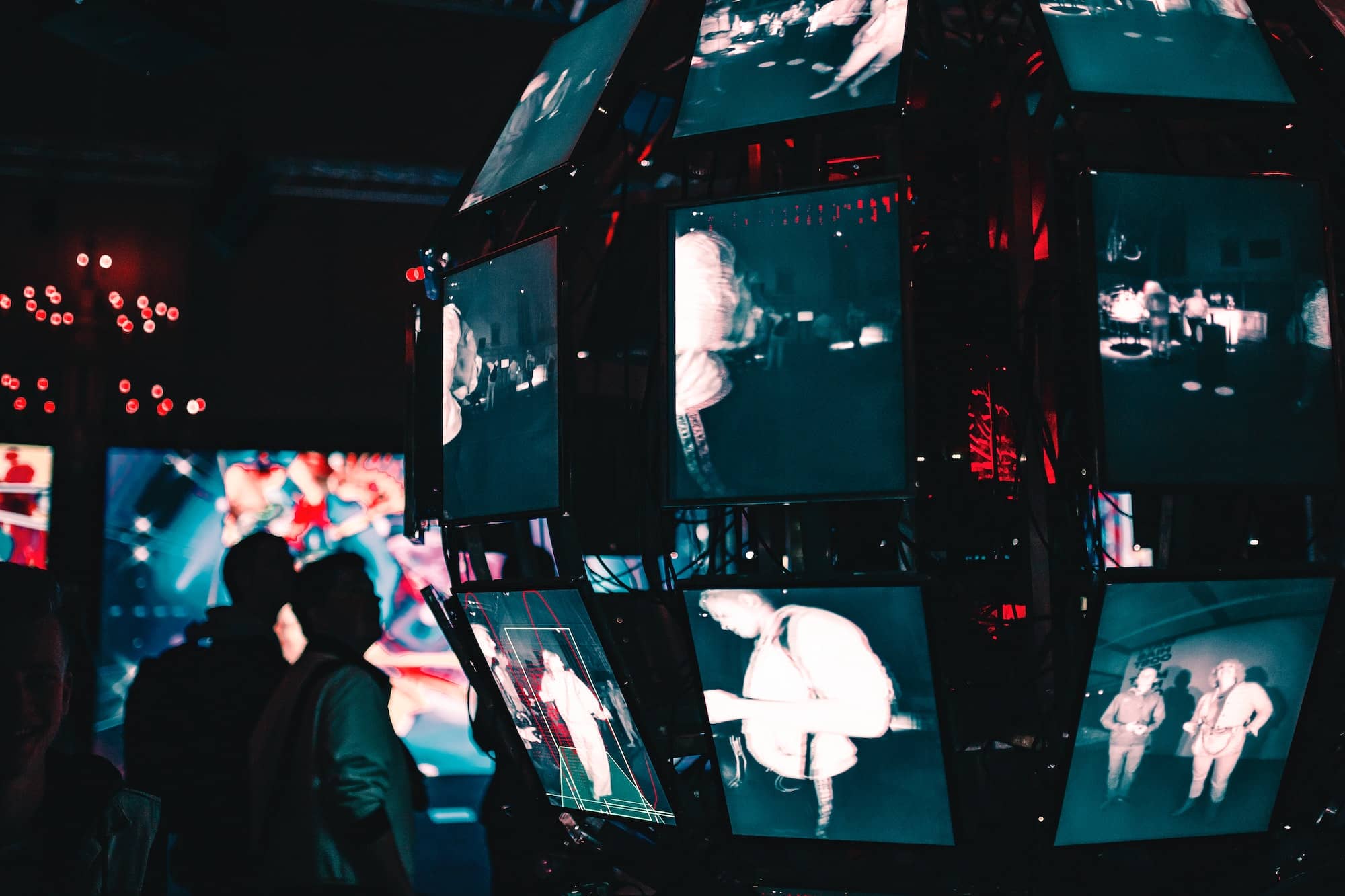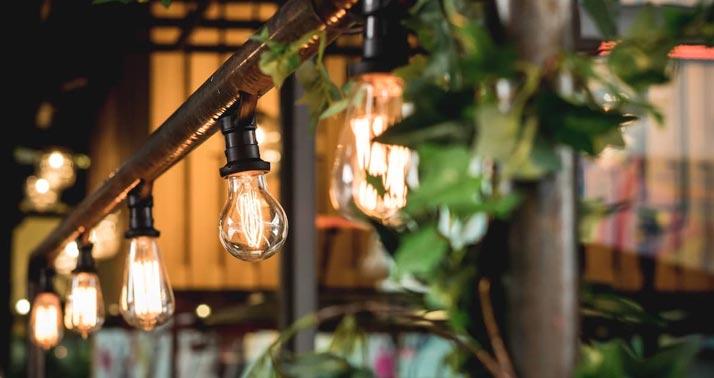
Proven Efficency

On average, lighting alone accounts for approximately 20% of a company’s utility budget. LEDs cost up to $2.99 per year to operate and have a 15 to 25 year life span.

CA SB-32

On September 8th, 2016, Californian Governor Jerry Brown signed CA SB-32 into law. This law requires a 40% statewide reduction in greenhouse gas emissions by 2030.

802.3bt PoE Standard

PoE can deliver power to low-voltage devices, up to 30 watts of power under the current highest-powered standard, 802.3at. However, IEEE currently has a new PoE standard in the works, 802.3bt, that will deliver between 60-100 watts of power.

POWER OVER ETHERNET (PoE) SWITCHES
Shop Versa Technology’s PoE Switch solutions for your next PoE LED Lighting project.
VX-GPU2610 L2+ 4-Port 802.3bt PoE + 4-Port 10/100/1000TX + 2-Port 100/1000X SFP Managed GbE UPOE Switch (240W, DMS)
The VX-GPU2610, from Versa Technology, delivers 4 UPOE ports (802.3bt/at/af, and total of 240W), 4 10/10/100TX ports, 2 Combo 100/1000X SFP TX ports and RJ45 Console port.
VX-GPU2626 L2+ 24-Port Managed GbE UPOE Switch (2000W)
The VX-GPU2626, from Versa Technology, delivers 24 10/10/100TX UPOE ports (802.3bt/at/af, and total of 2200W), 2 Combo 100/1000X SFP TX ports and RJ45 Console port.
CHECK OUT OUR LATEST
Blog
PoE Simplifies the 2019 Title 24/20 Lighting Efficiency Code Compliance in CA
Every few years, California releases its updated regulations on Title 20 and 24 for building energy efficiency for residential and nonresidential structures. These standards are helping occupants achieve lighting energy efficiency and savings. Though effective, these regulations are somewhat complicated to wade through. This post will endeavor to unpack the broader aspects of the latest […]
Barriers to Early Adoption of PoE Lighting Technology
In a new report published by Grand View Research, Inc., the global LED lighting market size is expected to reach USD 127.84 billion by 2027, exhibiting a compound annual growth rate (CAGR) of 10.8% over this forecast period. Factors driving the trend are the aggressive decline in LED lamp and luminaire pricing, longer lifespan, low […]
5 PoE Lighting Platforms Powering The Lighting Solutions of Tomorrow
What is PoE Lighting Technology? Power over Ethernet (PoE) lighting systems are smart lighting. They improve control over light quality, lower energy bills, and substantially lengthen bulb life. A PoE lighting platform and its fixtures use Ethernet cables to power lights (luminaires) and transmit data between the luminaire and the control software. They may also […]
Installers: 7 Ideas for Streamlining PoE Lighting Design and Installation
Smart Power over Ethernet (PoE) lighting control systems are value-adding parts of most intelligent building systems today. That said, setting them up to industry standards while satisfying unique customer requirements is no walk in the park. Installers are grappling with a shrunk labor force, tight schedules, and building codes that vary from place to place. […]
Optimizing LED Installs with Intelligent PoE Lighting Platforms
LED Lighting is booming! As all-in-one IoT lighting platforms become more affordable and easier to both install and use, consumers purchases are ramping up. One such platform, is the “SmartCast” lighting system from Cree, Inc. The all-in-one platform approach means components are pre-integrated and don’t require complicated setup. In fact, it’s a 1-touch setup. Systems […]
PoE Lighting Systems Are Reaching Epic Popularity in 2019
As the economy struggled over the past number of years, there have been no shortage of tough times for businesses. That being said, there are a few positive outcomes that arose thanks to tighter budgets. For consideration today, let’s look at the ultra-lean approach businesses have adopted regarding technological upgrades. Many business owners have become […]
The Complete Checklist for PoE-Lighting Installations
In our latest infographic, we’re providing a “Quick Start” guide to LED lighting installations. The LED lighting boom is coming folks, no doubt about it. But remember to be careful! If you’re not prepared for the job ahead of time, you may run into a number of issues. That’s why we’ve provided you with the complete […]
Largest PoE Lighting Installation Ushers Age of Innovation at Watt Family Center
Royal Phillips has announced its first large-scale lighting deployment powered by Power over Ethernet (PoE) at Clemson University. The University’s Watt Family Innovation Center now boasts state-of-the-art lighting that combines the energy efficiency of LED lighting with the simplicity of PoE cabling. PoE Lighting is a cutting edge technology that provides a branding statement of […]
PoE LED Lighting
Power over Ethernet (PoE) technology exemplifies perfectly how technological innovation evolves over time. After the IEEE board approved standards that greatly increased power output over Ethernet cables in 2019, PoE lighting systems have reached epic popularity.
In 2020, 61 percent of all lighting is expected to be LED during a time when the Internet of Things (IoT) is expected to hit its 20 billion connected device milestone.
A Bit of History
In 2000, Cisco Systems Incorporated devised PoE to support emerging Voice over Internet Protocol (VoIP) deployments, such as wireless LAN (WLAN) devices. Initially, PoE technology comprised of two types: Type 1 or IEEE 802.3af and Type 2 or 802.3at or PoE+. Type 1 provides a maximum power output of 15.4 watts per port while Type 2 offers a maximum power output of 30 watts per port.
In 2011, four-pair UPoE and PoH were developed, giving way to four-pair PoE in 2017. Four-pair PoE IEEE 802.3bt technology comprises two types: Type 3 which delivers a maximum power output of 60 watts with 51 watts available for compatible devices. Type 4 which delivers a maximum power output of 90 to 100 watts. Depending on the setup, Type 4 PoE has approximately 71 watts or so available for compatible devices. Four-pair PoE is capable of delivering power over all 4 pairs simultaneously with data. Lastly, four-pair PoE uses Category 5 Ethernet cabling comprised of eight cables.


Things You Need to Know About PoE LED Lighting
PoE-based LED lighting has been available since around the beginning of the 2010s. However, it wasn’t until a couple of years ago that this revolutionary technology started to garner attention. In September 2019, the IEEE board approved the 802.3bt-2018 – IEEE Standard for Ethernet Amendment 2: Power over Ethernet over 4 Pairs. This new standard increased the maximum wattage, as well as required improving efficiency by reducing power loss through the cables. Around the same period, LED luminaire efficacy had also greatly improved, ushering in a new age of efficient LED light solutions.
Below, we've listed all common PoE output standards and the year they were introduced:
In 2009, the PoE+ standard IEEE 802.3at was introduced and offered 30 watts with 25.50 watts of power available for connected devices (PD).
In 2018, PoE standard IEEE 802.3bt Type 4 (Ultra PoE, UPoE) was introduced and offered 100 watts with 71 watts power available for connected devices (PD).
In 2003, the PoE standard IEEE 802.3af was introduced and offered 15.40 watts with 12.95 watts of power available for connected devices (PD).
In 2018, PoE standard IEEE 802.3bt Type 3 (4PPoE, Ultra PoE, UPoE) was introduced and offered 60 watts with 51 watts power available for connected devices (PD).
Is PoE Technology Safe to Use With My Other Equipment?
IEEE 802.3af/at/bt compliant PoE technology is very safe—much safer than any other power source. Additionally, PoE injectors and switches will not harm any computer or networking hardware. Before the Power Sourcing Equipment (PSE) sends power to a connected device, the PSE establishes a handshake that determines how much power the connected device needs. This handshake uses low voltage that is innocuous to connected devices, whether they be PoE or non-PoE.
Once the handshake is achieved, the PoE injector or switch starts sending power, prompting the PD to power on. If a handshake isn’t achieved, the PSE never sends power. All IEEE 802.3af/at/bt-compliant devices feature this built-in safety function that makes PoE technology safe.
The Benefits of PoE LED Lighting
LED-based solid-state lighting (SSL) is now a well-established technology and has since replaced incandescent, halogen, and compact fluorescent lights (CFLs). The benefits of LEDs are well-known and include a smaller size, longer operational life, and significantly higher energy efficiency. LED lights are also cheaper to manufacture and have 802.3bt-2018 – IEEE Standard for Ethernet Amendment 2: Power over Ethernet over 4 Pairs.

PoE LED lighting represents a product that truly follows the 802.3bt-2018 – IEEE Standard for Ethernet Amendment 2: Power over Ethernet over 4 Pairs—avoiding unnecessary costs is more profitable to everyone than increased sales—by merging two completely different things: Information Technology (IT) and lighting. Common components such as computers, Ethernet hubs, network switches, low-voltage intelligent PoE drivers, and LED luminaire are all that’s needed for smart-home and building deployment. On top of that, the cost-effectiveness of PoE LED lighting solutions provides homeowners and organizations a reasonably quick return on investment (ROI).

The transmission of data and power over an ordinary Ethernet cable removes the demand for traditional AC/DC power sources and outlets to supply power to lighting. In turn, installation costs are drastically lowered, as one doesn’t need an electrician to install power. Additionally, Ethernet cabling is often already installed in most modern commercial buildings and is relatively affordable if installation is required.
Generally speaking, PoE technology has fewer points of failure. PoE powered LED lights are guaranteed continual power delivery, even if regular electrical power is interrupted. PoE-enabled switches or routers are capable of managing multiple LED lighting units.
This becomes quite useful to facility owners and managers with integrated views of their facility’s energy usage. Not only that but smart LED hubs allow network-connected devices like smartphones, tablets, laptops, and wearables to manage lighting as users move from one room to another.

Frequently Asked Questions
Is PoE Efficient?
PoE technology comes with significant energy efficiency benefits. Across devices, it can save up to 50% in energy compared to traditional wiring methods. For lighting in particular, the DC connection to LED lighting sources alone can save up to 20% in electricity costs in addition to the other efficiency benefits.
What Are the Disadvantages of PoE Lighting?
Despite its significant advantages, PoE lighting is not a magic solution. Some disadvantages of the technology include:
- Wattage limits, especially with older Ethernet cabling, can only support lighting up to 30W.
- Security concerns from the building network expand to its lighting. If the larger network is breached, lighting can also be controlled.
- Potential for outages, especially in installations where a single connection supports multiple devices or luminaires.
- Distance limits require extenders to supply power for any cabling longer than 100 meters or 300 feet.
Can My PoE LED Lighting Become a Security Vulnerability?
Because PoE powers smart devices, any device connected via ethernet (including lighting sources) are potentially vulnerable to cyber-attacks. Potential intruders could gain remote access over the lighting controls remotely, turning them on or off and changing the warmth and type of lighting without needing to be in the building.
However, it’s important to note that this risk is not elevated for lighting compared to other connected devices throughout the building. As long as building managers follow cybersecurity best practices, including adequate encryption and authentication, using secure products, and protecting the network, smart lighting systems tend to be safe. That’s especially true considering that once intruders gain access to the network, lighting is not likely to be a priority for gaining control and other malicious acts.
How Soon Can I Expect to See a Return on My Investment?
The ultimate return on investment for your PoE lighting installation depends on the scope of the installation and the existing network wiring and lighting sources within the building. As a general estimate, and thanks to its multi-faceted cost savings, a $15,000 investment in PoE lighting across a commercial building can return its initial investment within the first five years of installation.
How Does PoE Benefit My Business?
PoE benefits your business in various ways, from increasing cost savings and prioritizing sustainability to increasing the health and productivity of your employees. At the same time, it also introduces a significant element of flexibility into your physical setup. More flexible power sources can increase the use of smart technology throughout the building and move individual devices around without significantly increased costs.
What Lighting Platforms Can Help With PoE Products?
The recent rise of technology has led several manufacturers to use PoE lighting products for installation. Versatek has partnered and built relationships with five manufacturers based on the quality of their product and their strategic leadership in the field:
- Platformatics is an automated platform-based PoE lighting solution that provides an integrated system of nodes, fixtures, sensors, wall switches, Ethernet switches, and more. Its systems integrate with standards-based Ethernet switches to make installation easy and provide flexible support for any new applications or additions after the initial installation.
- IGOR is a certified Versatek partner that leverages PoE lighting as part of its overall Smart Buildings offerings. IGOR Nexos is an IoT platform built around the PoE structure, bringing sustainability and energy efficiency to multiple parts of building management–including lighting.
- Genisys is the PoE lighting division of innovative lighting. Its integrated software can automate light levels and include strategies for daylight harvesting. The company also offers Quads end-to-end systems for structural zones that can expand at a point in time after the initial installation.
- NuLEDs specializes in linking LED fixtures with IoT connectivity. Its systems use low-voltage CAT5 cables that enable power up to 100W and are already standard in many commercial buildings. Versatek has partnered with NuLEDs on projects like the 100% sustainable Volvo Building in Northern Carolina.
Cree uses its new Smartcast Intelligence Platform for a solution that can use up to 70% less electricity than the standard LED alternatives. Cree partners with building and facility managers on more customized financial analyses based on its expertise and experience in indoor and outdoor lighting, EV/HEVs, and electronic signage.
How Can I Optimize My PoE Lighting Setup?
PoE lighting installers consider five distinct variables when optimizing their lighting setups to improve efficiency, occupant health, and productivity:
- Physical layout, including the placement of art and furniture throughout the building.
- Lighting types, with different types complementing each other. Lighting is often planned in layers, with functional lighting first followed by task-based and accent lights.
- Lighting colors should match the furniture and colors in the room and the ideal mindset of the occupants within the space.
- Lighting balance, with the color and type of light balancing out the rest of the environment in which the light will be visible.
Room purpose, with different lights fulfilling different purposes for their audience. For example, communal seating areas require more light than storage or focus areas.



